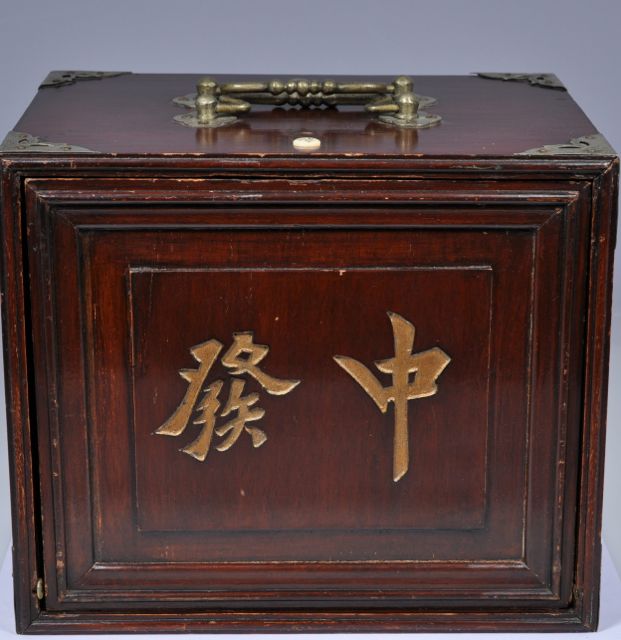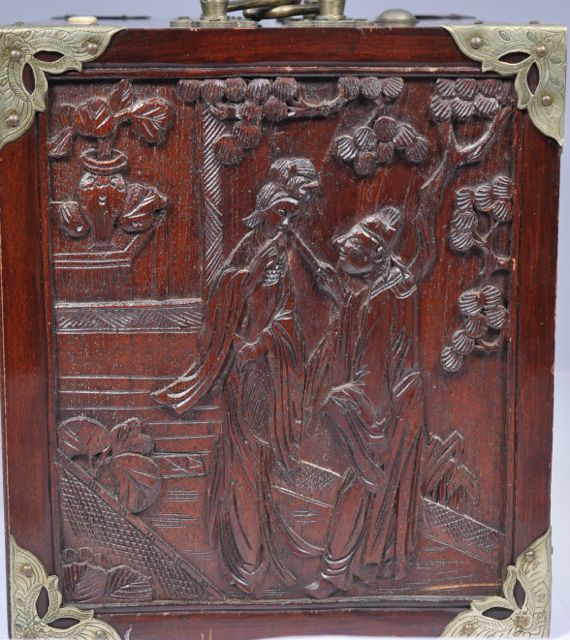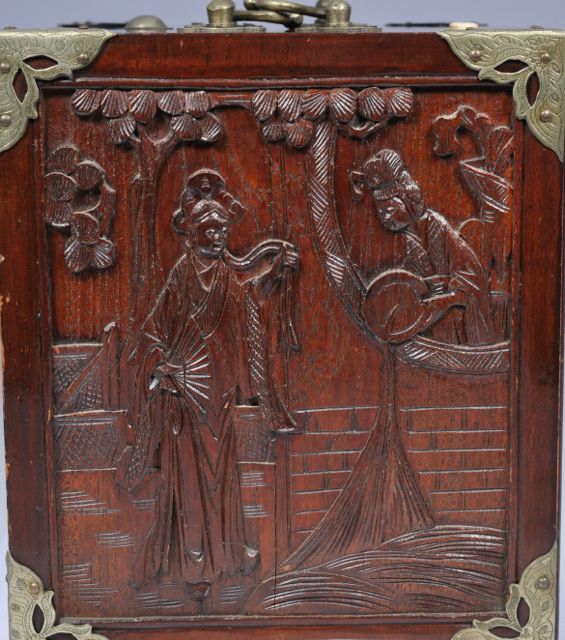This wood box holds a deep bone set that will be discussed tomorrow. The front panel has the signs for Fa (prosperity) and Chung (center, often symbolizing China). Pushing in the top button releases the panel which drops down to reveal the drawers. The two scenes on the box are different from the ones normally carved, and appear to be interactions with family members or servants, scenes of everyday life.
Ray Heaton noted the box is similar to a box Michael Stanwick describes on his site:
http://themahjongtileset.co.
Ray adds: "Michael uses the Pinyin for 中, "Zhong", whereas you have used the Wade Giles system of pronunciation with "Chung". Fa is the same in both."
One side of the box features an older man touching a young woman with what looks like a wand or a flute. The woman holds a fan in one hand, and points to her face with the other. The tree is most probably a pine. A vase holding a plant can be seen in the background, through an open window. Note the beautiful brass corners with the butterfly pattern. The carving patterns around are window are diaper patterns, often seen on box trim.
This appears to depict two young ladies, one of whom (the one of the right) is pouring out water, perhaps to help the other wash her hair. Once again we see a pine tree and a window, but this time the window is the curvilinear kind we often see on Flower tiles. Each lady is wearing a kimono, and the long sleeves are clearly seen on the one on the left.



